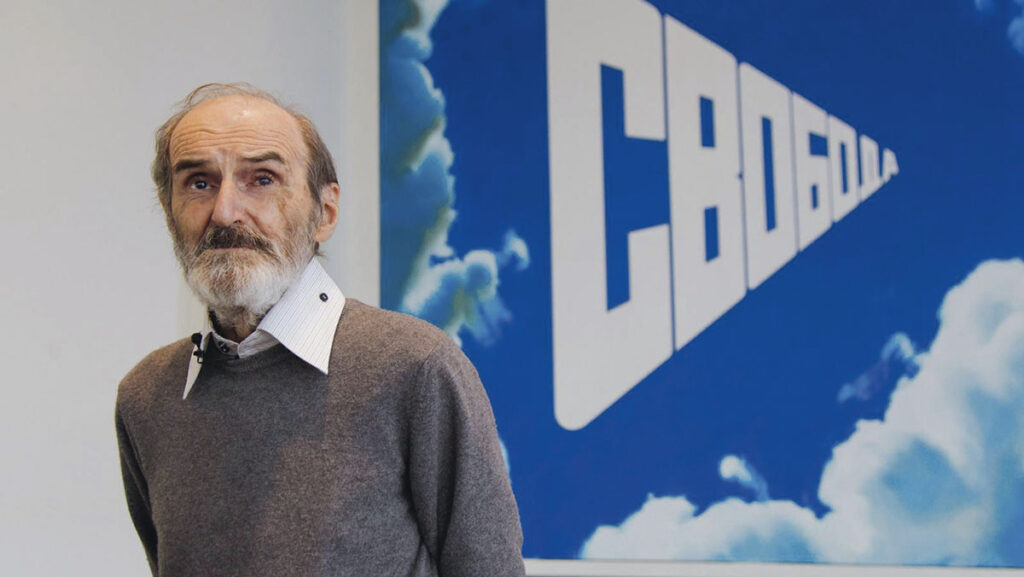From November 11 to January 21 for the first time in Nizhny Novgorod there is an exhibition of paintings by Russian nonconformist artist Eric Bulatov. The exhibition project “Horizon. To the 90th Anniversary of Erik Bulatov” is located on the newest and largest exposition platform of Nizhny Novgorod State Art Museum – in the exhibition warehouse on Strelka.
The exhibition includes about 20 significant works from different periods of the artist’s work: from the first experiments with space in the 1960s to the Parisian period of the 2000s. The basis was made up of works from more than ten Russian private collections. Bulatov’s early period of creativity is represented by the works of the leading Moscow museums – the State Tretyakov Gallery and the Pushkin Museum of Fine Arts.
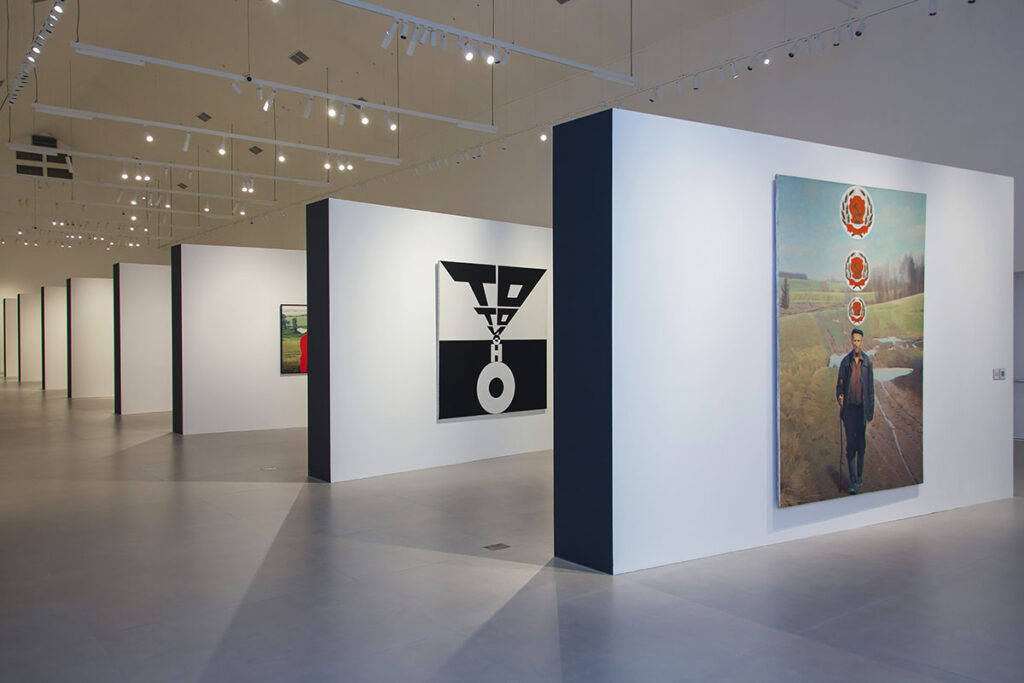
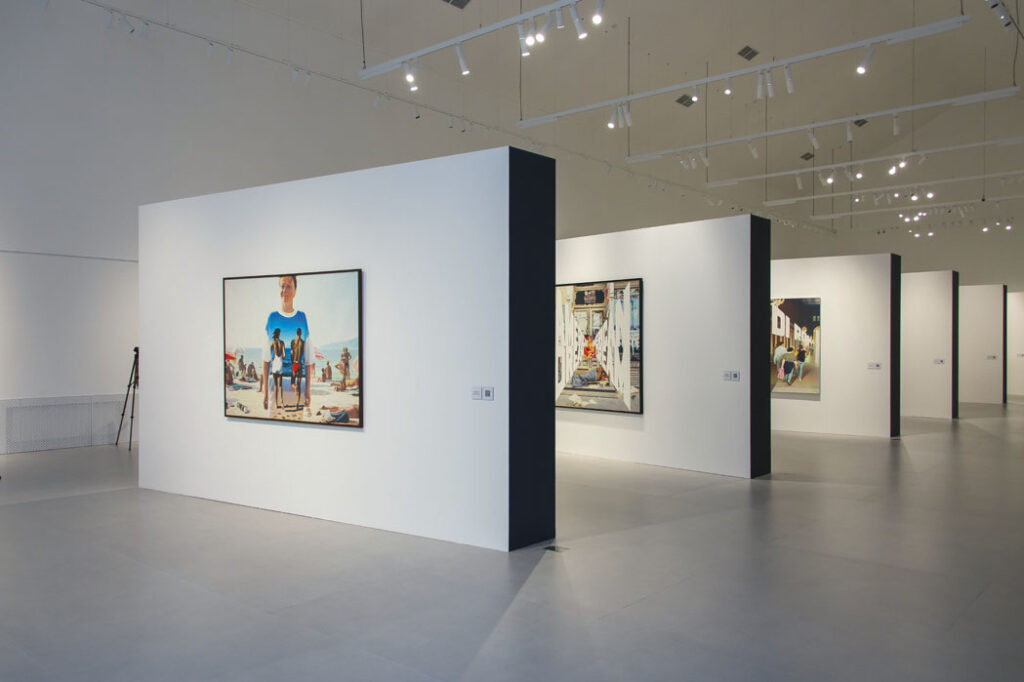
The organizers of the jubilee exhibition, headed by the curator of the project Marina Loshak, did not set themselves the task of showing a retrospective of Bulatov’s paintings, but sought to identify the core themes of his work, to organize the exhibition so that the sound of paintings and ideas of the artist was loud, in full voice. The Nizhny Novgorod exhibition warehouse can hold both 100 and 200 paintings, but only 19 paintings and 3 graphic works were selected for the project. A small number of works, laconic architecture, only Bulatov’s words as an audio guide – all these details of the exhibition project are aimed at making the artist’s voice sound as pure as possible.
Eric Bulatov is an artist-analyst. His work is a pictorial reflection on space and the properties of the CARTINE (“PICTURE”) (that is how, in large letters, the artist writes this word in his articles).
“In essence, a CARTIN (“PICTURE”) for me is a model of the world, the only reality I believe in.” Eric Bulatov
One of Eric Bulatov’s first and main experiments with the “reality” of a painting is to break the flat surface, exploring movement into depth and vice versa – from the depth of the painting onto the viewer. For this purpose, the artist uses various tools, primarily perspective and horizon line.
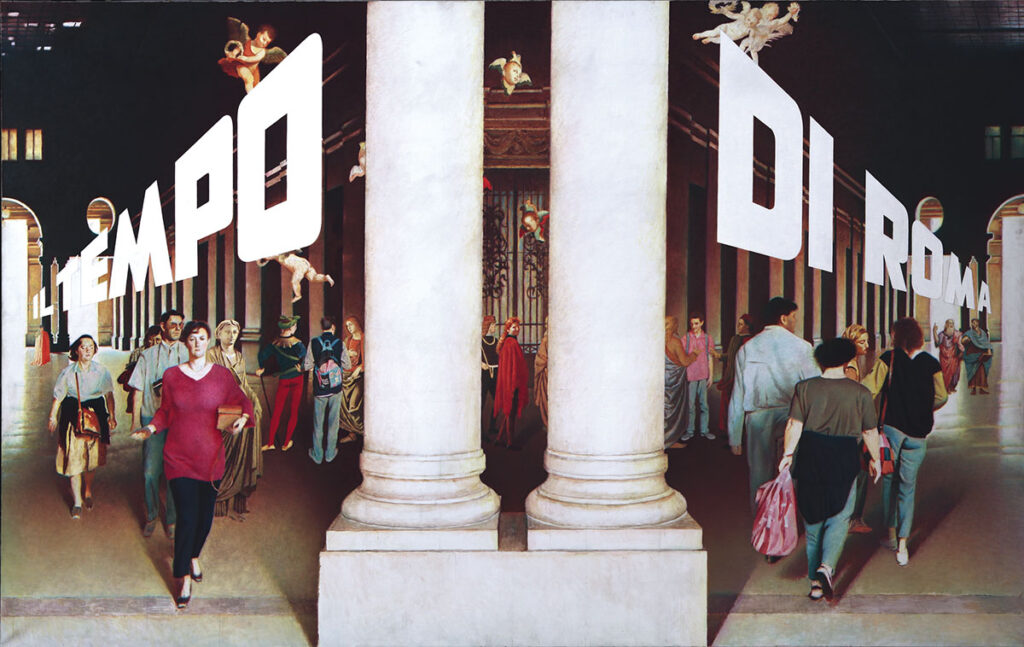
“…if the horizon of the image and the horizon of the painting coincide, the possibility of spatial movement into the painting and back at the viewer is maximized. To utilize the spatial energy of the painting as fully as possible, I try to align the horizon of the image with the horizon of the painting.” Eric Bulatov
Another most important feature of the artist’s works was the combination of realistic painting and the word in the picture. And the word in the space of Bulatov’s painting does not occupy a secondary place – it becomes as much a hero of the painting as the depicted objects and people. The artist studies the properties of the word: sound, power of influence depending on location, color, size.
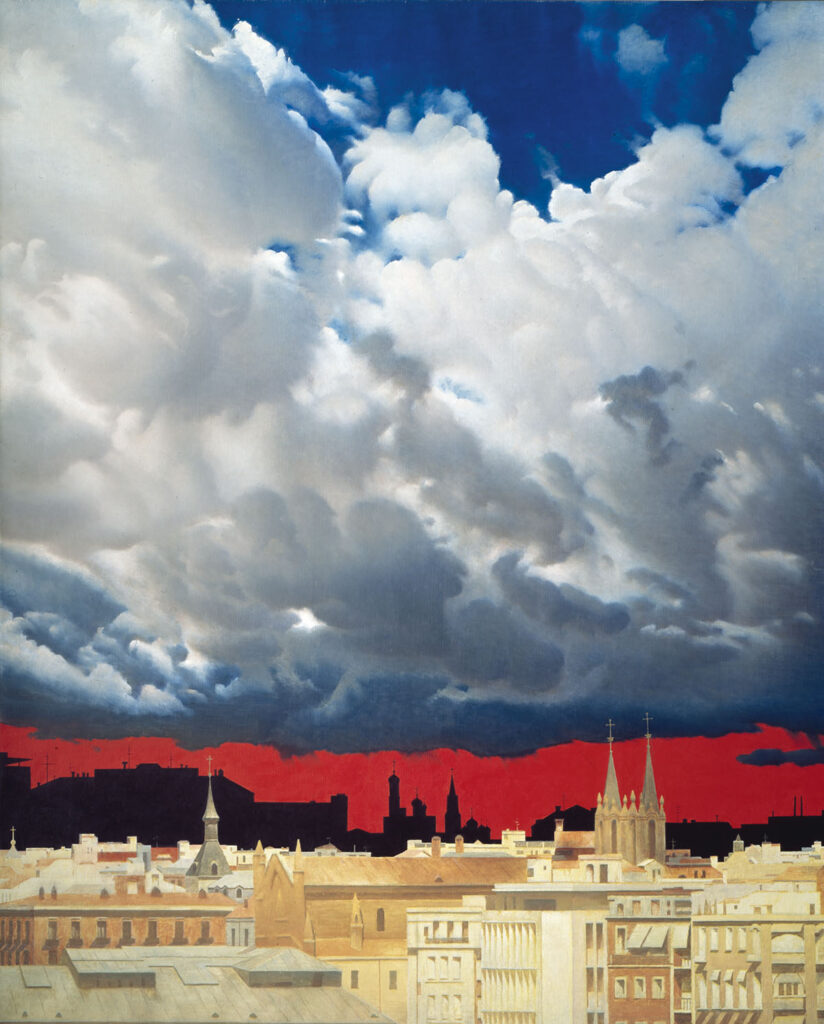
“Again, I always wanted to design a painting space that evolved both ways from the surface: towards the viewer and into the depth of the painting. This is where I found myself needing a word. After all, it is addressed to the viewer. And his position between the painting and the viewer gives him a natural ability to own the space.” Eric Bulatov
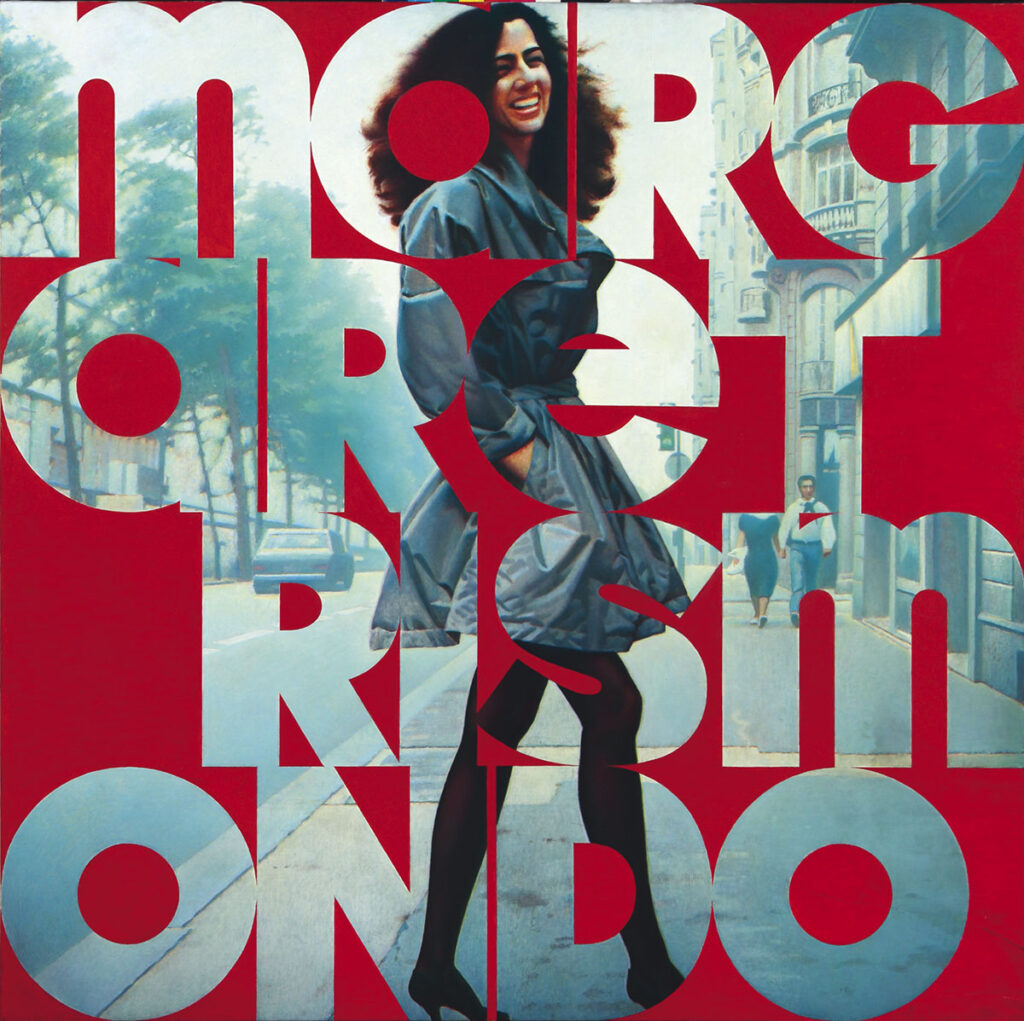
No less interesting are the artist’s experiments with color. For example, a whole series of works from 1994-1995 is devoted to the properties of red color.
“It must be said that the red color, due to its aggressiveness, easily takes over the space between the painting and the viewer and comes into contact with the social space, where it acquires the meaning of prohibition, threat. There’s a reason all prohibiting signs are red, I’ve never seen a single permissive red sign. Of course, the color red has many other meanings, physiological, aesthetic, for example…” Eric Bulatov
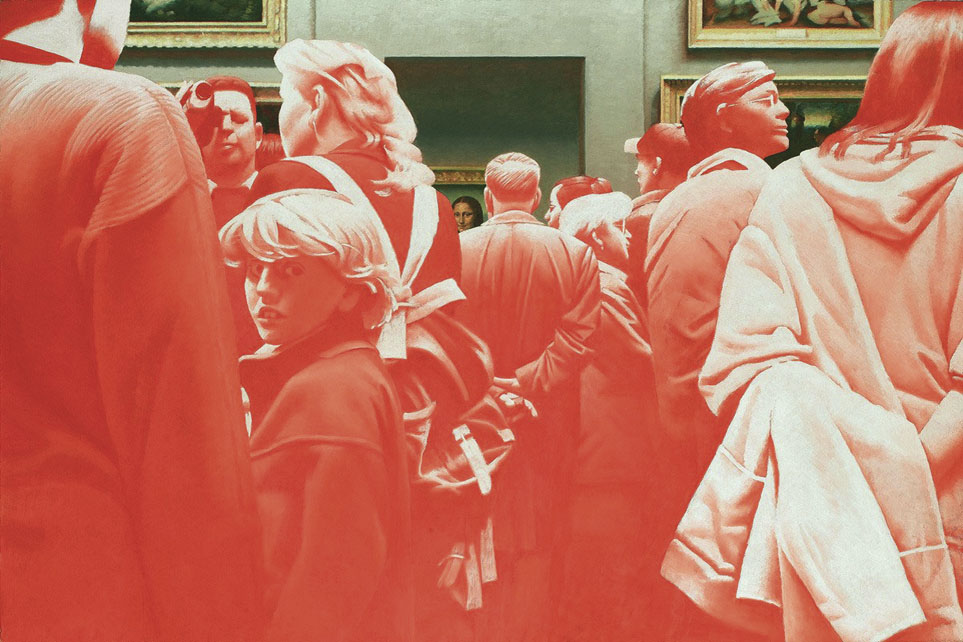
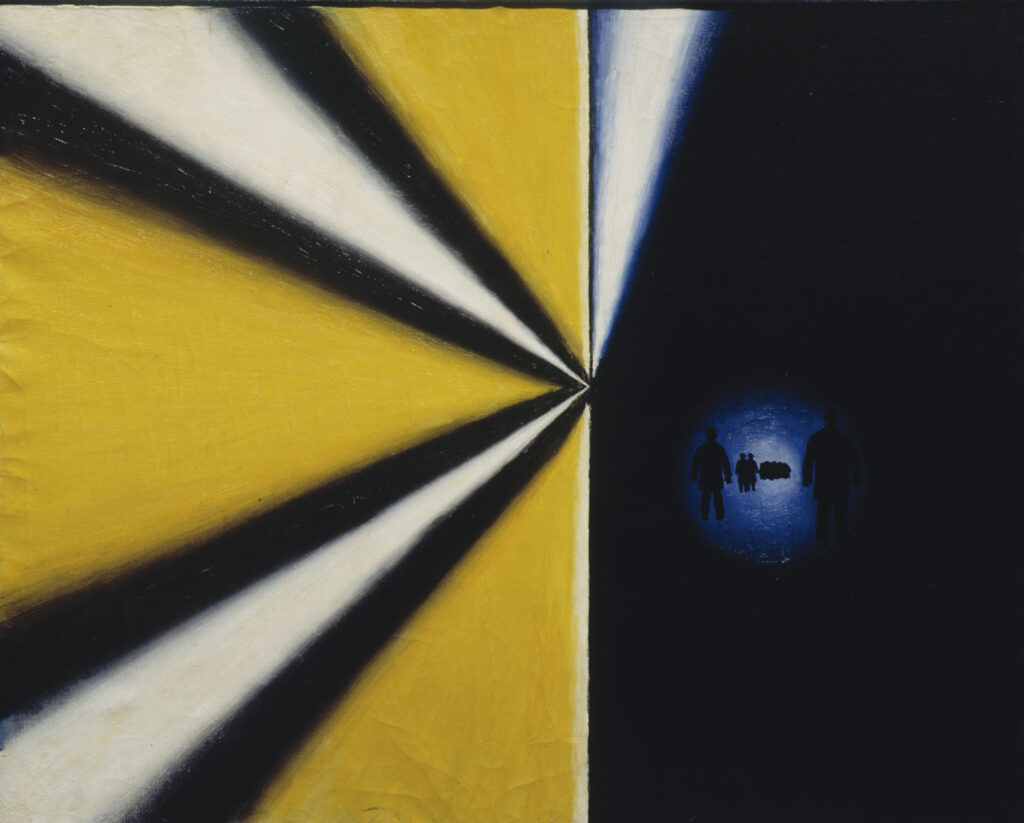
In his work, Eric Bulatov as if splits a picture into its first and most important elements, reflects on them, on their meaning and properties, and then reassembles them. This sequence is a red line that runs through the exposition of the exhibition “Horizon”: from early experiments with space in the abstract work “Cut” (1966), through the active study of perspective, word, color in the works of the 1990s – early 2000s, to the realistic “Boulevard Sevastopol” (2009-2010) – a serene Parisian street, the perspective going deep into the painting, converging at the vanishing point, disappearing behind the horizon line.
Text: Natalia Starikova,
researcher at the Nizhny Novgorod State Art Museum

